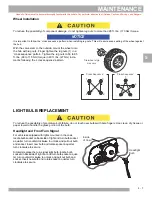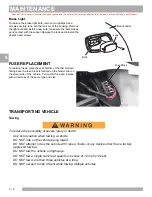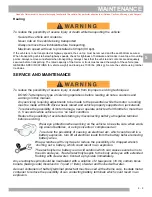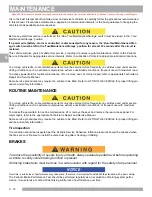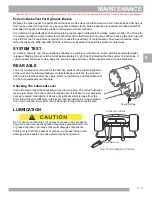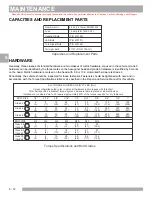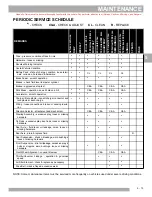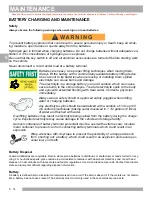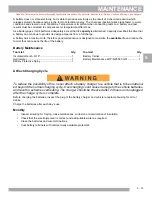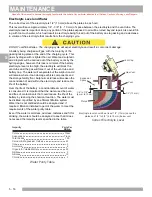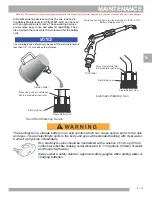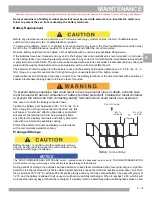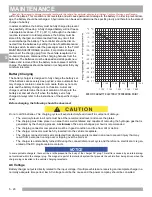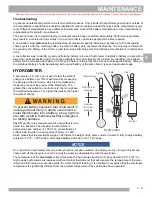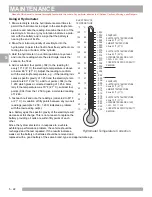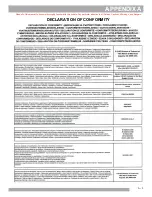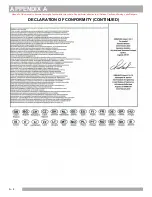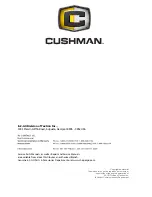
5 - 21
MAINTENANCE
Read all of this manual to become thoroughly familiar with this vehicle. Pay particular attention to all Notices, Cautions, Warnings, and Dangers.
5
Troubleshooting
In general, troubleshooting will be done for two distinct reasons. First, a battery that performs poorly and is outside of
the manufacturers specification should be identified in order to replace it under the terms of the manufacturer’s war-
ranty. Different manufacturers have different requirements. Consult the battery manufacturer or the manufacturer’s
representative for specific requirements.
The second reason is to determine why a particular vehicle does not perform adequately. Performance problems
may result in a vehicle that runs slowly or in a vehicle that is unable to operate for the time required.
A new battery must
mature
before it will develop its maximum capacity. Maturing may take up to 100 charge/dis-
charge cycles. After the maturing phase, the older a battery gets, the lower the capacity. The only way to determine
the capacity of a battery is to perform a load test using a discharge machine following manufacturer’s recommenda-
tions.
A cost effective way to identify a poorly performing battery is to use a hydrometer to identify a battery in a set with a
lower than normal specific gravity. Once the particular cell or cells that are the problem are identified, the suspect
battery can be removed and replaced. At this point there is nothing that can be done to salvage the battery; however,
the individual battery should be replaced with a good battery of the same brand, type and approximate age.
HYDROMETER
A hydrometer
(P/N 50900-G1)
is used to test the state of
charge of a battery cell. This is performed by measuring
the density of the electrolyte, which is accomplished by
measuring the specific gravity of the electrolyte. The
greater the concentration of sulfuric acid, the more dense
the electrolyte becomes. The higher the density, the higher
the state of charge.
To prevent battery explosion that could result in
severe personal injury or death, never insert a
metal thermometer into a battery. Use a hydrom-
eter with a built in thermometer that is designed
for testing batteries.
Specific gravity is the measurement of a liquid that is com-
pared to a baseline. The baseline is water which is
assigned a base number of 1.000. The concentration of
sulfuric acid to water in a new golf car battery is 1.280
which means that the electrolyte weighs 1.280 times the weight of the same volume of water. A fully charged battery
will test at 1.275 - 1.280 while a discharged battery will read in the 1.140 range.
Do not perform a hydrometer test on a battery that has just been watered. The battery must go through at least one
charge and discharge cycle in order to permit the water to adequately mix with the electrolyte.
The temperature of the
electrolyte
is important since the hydrometer reading must be corrected to 80° F (27° C).
High quality hydrometers are equipped with an internal thermometer that will measure the temperature of the elec-
trolyte and will include a conversion scale to correct the float reading. It is important to recognize that the electrolyte
temperature is significantly different from the ambient temperature if the vehicle has been operated.
Float
Bulb
Cylinder
Thermometer
Add to Float
Reading
Subtract
from Float
Reading
Weight
Hydrometer
NOTICE

